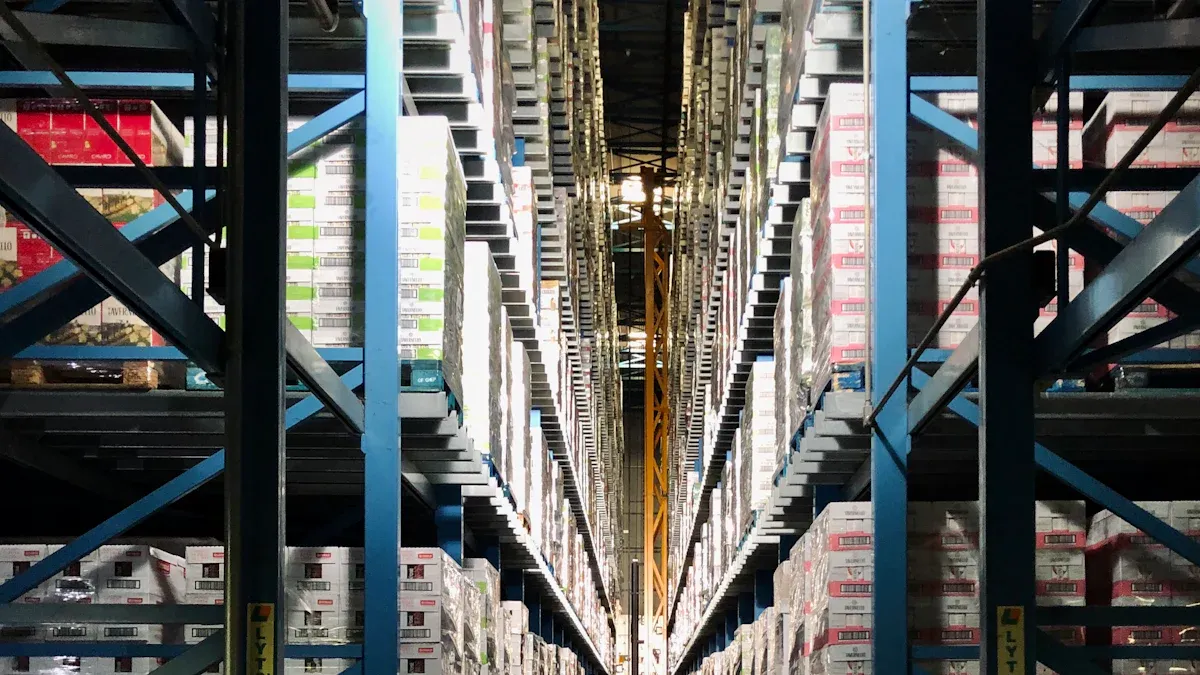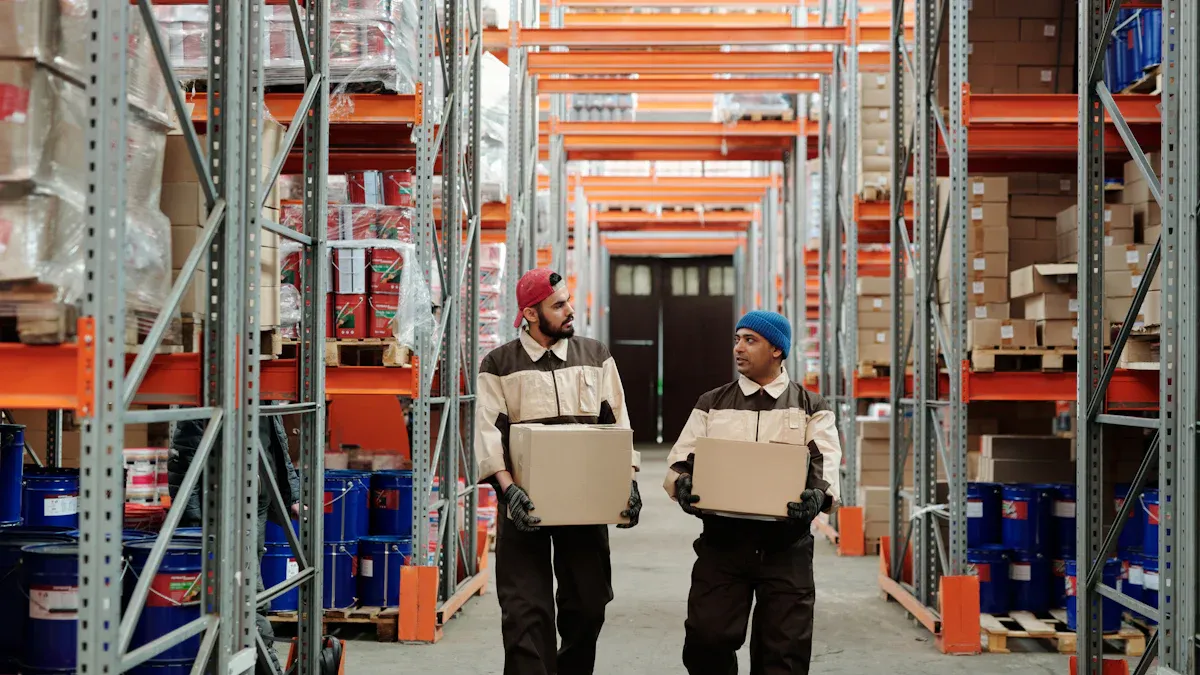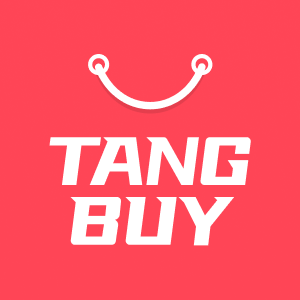Why Order Management Systems Matter More Than Ever for Dropshipping in 2025

You see more dropshipping businesses using order management now. When you run a good dropshipping shop, you want fast orders. You also want fewer mistakes and happy customers. A modern order management system makes things much quicker. It can cut your work time from days to just hours. It also lowers mistakes by more than 90%. You can track orders and keep your stock updated. You can also handle many sales channels at the same time. Cloud-based platforms are now the top choice. Small and medium businesses use them most. This is because they are easy to automate and connect with other tools.
Aspect | Insight |
|---|---|
Most popular for scalability and cost efficiency | |
Multi-channel adoption | |
Mobile Commerce | Over 72% traffic comes from smartphones |
Automation tools help stop mistakes and make orders faster.
Real-time tracking makes customers happier.
Good systems help you change and grow.
Key Takeaways
A good order management system makes orders faster and cuts mistakes by more than 90%. This saves you both time and money.
Real-time inventory tracking stops you from selling things that are out of stock. It also helps you work with many suppliers easily.
Using one system for all your orders keeps your stock and orders tidy. It also helps stop mistakes from happening.
Automation tools send orders to suppliers and update stock by themselves. This means you do not have to do it by hand, and it is more correct.
A strong OMS makes customers happier by giving clear shipping updates, quick delivery, and simple returns.
Picking a scalable OMS lets your dropshipping business grow without losing control or making more mistakes.
Following new rules and working well with suppliers is easier with an OMS that helps people work together and uses automation.
Using data and analytics from your OMS helps you plan better, see trends, and make your dropshipping shop do better.
Order Management in Dropshipping

Why Order Management Matters
Running a dropshipping shop can get messy fast. Orders come from many places. Customers want quick shipping and clear updates. You must watch your stock, even if you never see the items. Order management helps you keep things organised.
Here are the main reasons order management is vital for dropshipping in 2025:
Handling orders by hand gets too hard as your shop grows.
Automation tools, like Inventory Source and Spocket, help you track stock and process orders right away.
Linking with your e-commerce platform lowers mistakes and makes things run better.
Good order management lets you send orders quickly, so customers stay happy.
Giving clear shipping updates helps buyers trust you.
Note: Getting orders right is important. If you send the wrong thing or miss an order, customers get upset and returns cost you money. Real-time stock tracking stops you from selling items you don’t have. You also need to process orders fast to meet delivery times. Managing shipping well saves money and keeps customers coming back.
You can use order management software, built-in e-commerce tools, or third-party logistics partners. Each one helps you handle orders, track stock, and grow your dropshipping business.

Key Challenges in 2025
Dropshipping keeps changing. In 2025, new problems make order management even more important. Here are the biggest challenges:
Supplier reliability: Many dropshippers find it hard to get suppliers who ship on time and send good products. A recent survey found 84% of retailers say this is their top problem.
Inventory management: You don’t keep stock, so you might run out or have too much. Real-time tracking and using several suppliers help you avoid lost sales or wasted stock.
Shipping times: Long waits, especially from far away, make customers leave their carts. About 70% of shoppers will not buy if delivery is slow.
Customer support: Since you never touch the products, you must fix problems quickly and keep customers updated.
Need for automation: Automating order processing, stock tracking, and customer service cuts mistakes and helps you grow. AI tools can lower stock costs by up to 20%.
You might also deal with split shipments, tricky returns, and uneven customer experiences. Without a strong order management system, you could lose control of shipping, sell too many products, or find it hard to track orders from many suppliers. Talking to suppliers in other time zones or languages can slow you down. Problems linking systems can stop your stock and order data from matching.
To stay ahead, you need a reliable order management system. It gives you real-time updates, smart order handling, and easy communication with suppliers. This helps your dropshipping shop run well, even when things get tough.
What is an Order Management System?

You may ask what an order management system does for dropshipping. It works like a control centre for your shop. It helps you manage orders from start to finish. You can see all your orders and stock in one place. You also get updates from suppliers in the same spot. This helps your shop run well, even if you sell on many sites.
Core Functions
A good order management system gives you helpful tools. These tools keep your dropshipping shop neat and running well. Here are the main things you should look for:
Order Tracking
Order tracking lets you know where each order is. You can check if it is confirmed, shipped, or delivered. Customers get updates too, so they worry less. This means fewer questions for you. Real-time tracking helps you spot problems early and fix them fast.
Inventory Sync
Inventory sync is very important for dropshipping. You need live updates so you do not sell out-of-stock items. The system links with your suppliers and updates your stock everywhere. This stops you from selling too much. It also helps you manage stock from different suppliers. You get alerts when stock is low, so you can act quickly.
Multi-Channel Integration
Multi-channel integration lets you sell on many sites at once. You can use Shopify, WooCommerce, Amazon, and more. The system brings all your orders into one dashboard. You see everything together, which saves time and cuts mistakes. You also get live stock updates on every site. This keeps your dropshipping stock numbers right.
Tip: If you use a strong order management platform, you can automate order processing, tag orders for special handling, and route orders to the best supplier or fulfilment centre. This makes your dropshipping business much more flexible.
Integration Methodology | Key Features & Benefits | Use Case in Dropshipping Ecosystem | |
|---|---|---|---|
Shopify Plus | Scalable APIs, Shopify Flow automation, apps | Real-time inventory sync, multi-location stock tracking, automated order routing, extensive app ecosystem | Enterprise luxury brands needing scalable, customisable OMS |
WooCommerce | Plugins, REST APIs, webhooks | Real-time supplier sync, multi-warehouse support, content-rich integration | Mid-sized luxury stores needing flexible, cost-effective OMS |
Odoo ERP | Native dropshipping, integrated ERP and CRM | Unified inventory, order, and customer management, multi-warehouse tracking, Python-based custom workflows | Brands needing full operational transparency and control |
How It Supports Dropshipping
Dropshipping shops have special problems. You do not keep stock yourself. You need suppliers for stock updates and inventory management. An order management system helps you automate orders and send invoices. It also helps you manage shipping papers with your brand. You can handle returns and cancellations easily, even from different suppliers.
With order management software, you have one place for all your orders. You can change how things work and control who uses the system. You can grow your shop as you get bigger. The system keeps your stock in order and your orders moving fast. You can fix problems early and keep your customers happy.
Benefits of a Good Order Management System

Automation and Error Reduction
It is easy to make mistakes when you do orders by hand. You might write the wrong address or forget to change your stock. Automation helps with these jobs. An order management system does these tasks for you. It sends order details to your suppliers. It updates your stock without you doing anything. You make fewer mistakes and save lots of time.
Here’s what you get with automated order management systems:
You avoid mistakes in customer details and shipping addresses.
The system updates your stock right away, so you never sell items you do not have.
Automated workflows take over manual checks, making your shop run better.
You get quick updates for your customers, which builds trust.
Order management software uses smart algorithms to keep things correct. You do not need to worry about typing errors or lost orders. This means you spend less time fixing problems and more time growing your business. Automation also saves money because you do not lose cash from wrong orders or unhappy customers. You see better accuracy in every part of your dropshipping shop.
Tip: If you want to make more profit, automation is your best helper. It keeps your order management sharp and your customers pleased.
Real-Time Inventory Management
Imagine selling something online, but it is out of stock. That is a big problem for any dropshipping shop. Real-time inventory management fixes this issue. Your order management system links your shop with your suppliers. It updates your stock levels right after every sale. You always know what you have and what you need to buy.
Dropshipping inventory management works best with real-time syncing. You get alerts when stock is low. You can set up backup suppliers for popular products. This stops you from missing sales and keeps your customers happy. Studies show poor inventory management can cost you up to 11% of your yearly money. Real-time updates cut stockouts by 30%, so you keep more sales and avoid angry buyers.
Your order management system uses smart tools like API and EDI integrations. These tools keep your global inventory correct across all your sales channels. You do not need to check each supplier by hand. The system does it for you. You get better accuracy, faster delivery, and a stronger reputation. Dropshipping inventory management becomes simple and reliable.
Feature | Benefit |
|---|---|
Real-time syncing | Stops overselling and stockouts |
Automated alerts | Helps you restock before you run out |
Multi-supplier support | Lowers risk of missed sales |
Predictive analytics | Improves forecasting and planning |
Note: Real-time inventory management is key for growth. It helps you grow your dropshipping shop without losing control of your stock.
Seamless Order Management Across Channels
You probably sell on more than one platform. Maybe you use Shopify, Amazon, or WooCommerce. Managing orders from all these places can get messy. A good order management system brings everything together. You see all your orders, stock, and customer details in one dashboard. This is what seamless order management looks like.
Centralised dashboards save you time and cut down on mistakes. You do not need to switch between websites or copy data by hand. The system sends orders to the best supplier or fulfilment centre. You get faster shipping and happier customers. Real-time inventory updates keep your dropshipping inventory management correct everywhere.
Here’s how seamless order management helps you:
You get quick updates for every order and every channel.
Automated order routing speeds up fulfilment and lowers costs.
You avoid overselling and stockouts with instant inventory syncing.
Integrated tools link your shop with ERP, CRM, and marketing platforms.
Rich analytics show you what works and where you can improve.
Omnichannel store fulfilment becomes easy. You can handle ship-from-store, curbside pickup, and dropshipping all at once. Your order management system helps you grow by keeping your global inventory in sync. You get better accuracy, faster delivery, and a smoother customer experience.
Callout: If you want to grow your dropshipping shop, seamless order management across channels is a must. It keeps your business running well and helps you expand.
Customer Satisfaction
You want your customers to feel happy every time they shop with you. A good order management system helps you do just that. When you use the right tools, you make the whole process smooth and stress-free for your buyers. Here’s how an order management system boosts customer satisfaction:
It automates order routing and keeps everything in sync, so you avoid mistakes.
Payment processing becomes quick and easy, which means no delays for your customers.
You keep in touch with your suppliers, so orders get fulfilled correctly.
Real-time inventory management stops you from selling items that are out of stock.
Customers get real-time tracking and updates, so they always know where their order is.
You can pick reliable shipping partners and offer easy returns, making shopping worry-free.
A central dashboard lets you see all your orders at once, so you never miss a thing.
You can review and improve your order process by listening to feedback.
When you use these features, you make your shop more efficient and transparent. Your customers trust you more because they get updates and quick answers. They also enjoy a better customer experience, which keeps them coming back. If you want to stand out in dropshipping, focus on making your customers happy at every step.
Scalability for Growth
As your shop gets bigger, you need systems that can keep up. A scalable order management system helps you handle more orders without losing control or making mistakes. You can grow your business and still keep things running smoothly. Here’s what makes a system scalable:
Automated order routing sends each order to the best supplier, saving time and money.
Real-time inventory syncing across all your suppliers and warehouses keeps your stock levels right.
Automation takes care of routine tasks, so you can focus on new ideas and business growth.
Central dashboards help you manage many suppliers and stores at once, so you never feel overwhelmed.
Analytics and reporting tools show you how fast you process orders and how well your suppliers perform.
Integration with other systems, like ERP and shipping providers, makes your whole operation more efficient.
New technology, such as IoT and blockchain, gives you better stock tracking and security.
You can handle more orders, add new products, and reach new markets without slowing down. Your team spends less time on manual work and more time planning for growth. With the right order management system, you build a strong base for your shop and set yourself up for long-term success.
Trends and Challenges for Dropshipping in 2025

Increased Competition
In 2025, dropshipping is much busier than before. More people want to open their own shops, so you have more rivals now. You cannot just use simple dropshipping logistics anymore. To stand out, you must use smart tools and fresh ideas. Here are some trends you should know:
Many new business owners are starting dropshipping, so it is harder to get noticed.
AI and automation help shops work faster and make fewer mistakes.
Personalised shopping and using data for marketing are now very important if you want loyal customers.
Fast and reliable shipping from local warehouses helps you beat the competition.
Eco-friendly products are more popular, so you should think about what you sell.
Social media, influencers, and automatic emails are important for marketing.
You must be flexible to deal with changes in dropshipping logistics and market trends.
If you want to keep up, you need a strong order management system. It helps you manage 3pl fulfilment services, track orders, and keep your logistics running well. You can also use third-party logistics to reach more customers and give better service.
Higher Customer Expectations
Customers in 2025 want more from every dropshipping shop. They want fast shipping, clear updates, and good products. If you do not give them these things, they will shop somewhere else. Here is what you should focus on:
Customers want quick fulfilment and fast answers to their questions.
You need to give them correct product details and real-time order tracking.
Good order management systems, like TradeGecko or ShipStation, help you process orders quickly and keep customers happy.
Easy returns and refunds are now normal. Clear rules make buyers trust you.
Customer service tools, such as Zendesk, help you answer questions and fix problems fast.
Order management systems with AI can do many jobs for you. They update customers about their orders, sync inventory, and even use chatbots for instant help. This makes your dropshipping logistics much smoother and keeps your customers coming back.
Tip: If you want to grow, focus on customer satisfaction. Use 3pl fulfilment services and smart logistics to give buyers what they want.
Supply Chain Complexity
Dropshipping in 2025 has more complicated logistics than before. You must deal with new rules, more suppliers, and changing customer needs. Here are some of the main problems:
New e-commerce laws, like GDPR and product traceability, mean you must keep better records.
You need to work with certified suppliers and logistics experts to stay ahead.
Global supply chain problems can slow down shipping and delivery.
Technologies like AI, blockchain, and IoT add new steps to your work.
You have less control over stock because you rely on suppliers for inventory.
Shipping delays and longer wait times can upset your customers.
You may pay more because of tariffs, inflation, and trade wars.
More competition means you must use 3pl fulfilment services to keep up.
You need to be ready to change your dropshipping logistics plan quickly. Using 3pl fulfilment services helps you manage orders, track shipments, and keep your business running well. If you want to avoid lost sales and unhappy customers, you must invest in the right logistics partners and technology.
Note: A good order management system links all parts of your supply chain. It helps you work with 3pl fulfilment services, manage third-party logistics, and keep your dropshipping shop working well.
Compliance and Collaboration
You might think compliance and collaboration are hard. But they are very important for dropshipping in 2025. There are new rules to follow. You also need to work with many partners. If you want your shop to run well, you must keep up with the laws. Everyone in your supply chain must work together.
Here are some big problems you will face:
You must follow new rules, like EPA Tier 3 emission standards. These rules change a lot, especially if you sell auto parts. If you miss a rule, you could get fined or have to recall products.
You need to make sure each product is right for the customer. If you send the wrong thing, you get more returns and unhappy buyers.
You have to manage stock with many suppliers and marketplaces. Each one may use a different system or sell at a different speed. This makes it easy to sell too much or run out of items.
You cannot do all these jobs by hand. That is why you need a strong order management system. It helps you control your logistics and follow every rule.
Note: With an order management system, you get live stock updates. You always know what you have, even with many suppliers. This helps you avoid selling too much and keeps your logistics smooth.
Order management systems help you:
Automate order routing and track shipments, so you make fewer mistakes.
Match invoices fast, which saves time and money.
Connect with suppliers and third-party logistics, so your data is correct.
Watch for new rules and set up plans for recalls or quality problems.
Use new tech like mobile apps, blockchain, and robots to make things more accurate and clear.
Here is a quick look at how these systems help with compliance and working together:
Challenge/Need | OMS Feature/Benefit |
|---|---|
Compliance with regulations | Rule checks, quality checks, and plans for recalls |
Inventory synchronisation | Live updates, multi-channel order handling, supplier links |
Reducing manual errors | Automation for orders, invoices, tracking, and returns |
Collaboration with suppliers | Built-in links, easy data sharing, smooth logistics |
Scalability and customisation | Modular design, custom workflows, and support for growth |
Advanced tech integration | Mobile, blockchain, and robots for better logistics |
You need to work closely with your suppliers and logistics partners. If you use a modular order management system, you can change your workflows and grow as your shop gets bigger. You can also balance what customers want with your costs. This keeps your logistics working well and your customers happy.
Callout: If you want to do well in dropshipping, focus on compliance and working together. The right order management system helps you handle tricky logistics, follow every rule, and work better with your partners.
How to Manage Orders Efficiently

Managing orders well is very important for dropshipping shops. If you want your shop to grow, you need the right tools. You also need to use smart ways to work. Let’s see how you can manage orders well and not make mistakes that slow down other shops.
Choosing the Right System
Picking an order management system can seem hard. You want one that works for you now and later. Here’s how you can choose the right one:
Automate manual tasks. Pick a system that does order processing, stock updates, and tracking for you.
Support for multiple warehouses and suppliers. If you use more than one supplier or warehouse, your system should handle this easily.
Reporting and forecasting. Good reports help you see trends and get ready for busy times.
Easy integrations. Make sure your system links with your shop, suppliers, and other tools.
API access. This lets you add new features or connect with new tech as you grow.
Multi-channel management. You want to sell on many platforms and keep everything in sync.
Centralised dashboard. See all your orders, stock, and fulfilment in one place.
Test before you buy. Try demos, ask for trials, and read reviews from other dropshippers.
Tip: Always check if the order management system works with your sales channels now and in the future. This stops you from needing a new system later.
Must-Have Features
When you look for order management software, focus on features that make things easier. These features help you manage orders well. Here are the most important ones:
Automation
Automation is very helpful in dropshipping. It removes boring jobs and stops mistakes. With automation, you can:
Send orders to suppliers as soon as someone buys.
Update stock levels in all your shops right away.
Give tracking numbers to customers quickly.
Send orders to backup suppliers if your main one runs out.
Many dropshippers who use automation see their fulfilment time drop by 30%. You also avoid problems like wrong shipments or missed orders, which often happen when you do things by hand.
Real-Time Data Sync
Real-time data sync keeps your shop running well. You always know what is in stock, so you never sell items you do not have. This feature:
Updates inventory every few minutes.
Reduces cancellations by up to 87%.
Helps you switch to a backup supplier if needed.
Stops overselling and keeps your customers happy.
If you want to avoid angry buyers and lost sales, make sure your order management system offers strong real-time syncing.
Multi-Channel Support
Most dropshipping shops sell on more than one platform. You might use Shopify, Amazon, or WooCommerce. Multi-channel support means you can:
Manage all your orders from one dashboard.
Sync stock and prices across every channel.
Handle returns and customer messages in one place.
Stay compliant with each marketplace’s rules.
A good order management platform lets you grow your business without losing track of orders or stock. You can even expand to new markets with less stress.
Supplier Integration
Supplier integration is key for dropshipping. You need to connect your system with your suppliers so you can:
Get live stock updates.
Send orders automatically.
Track shipments from the supplier to your customer.
Switch to another supplier if there’s a problem.
This feature helps you avoid delays and keeps your customers in the loop. It also makes it easier to manage returns and refunds.
Feature | What It Does |
|---|---|
Keeps stock levels correct everywhere, prevents overselling | |
Automated Order Fulfilment | Sends orders to suppliers and switches to backups if needed |
Multi-Channel Integration | Combines orders and stock from all your sales channels |
Supplier Integration | Connects directly with suppliers for fast, accurate fulfilment |
Analytics and Reporting | Shows you trends, slow products, and helps you plan for growth |
Security and Fraud Protection | Keeps your business and customers safe from fraud and data loss |
Note: Dropshipping businesses that use these features often grow faster and handle more orders without extra stress.
Implementation Tips
Setting up your order management system the right way is important. Here are some tips to help you do well:
Automate order processing. Set up rules so orders go straight to suppliers and customers get tracking updates.
Keep inventory updated. Use real-time syncing to avoid selling out-of-stock items.
Centralise your data. Manage all orders, stock, and returns from one place.
Use clear order statuses. Let customers know where their order is at every step.
Add fraud protection. Use built-in tools to spot and stop fake orders.
Streamline returns. Make it easy for customers to return items and get refunds.
Optimise shipping. Offer different shipping options and automate label printing.
Keep product info accurate. Update details in one place to avoid mistakes.
Use barcodes and scanners. This reduces manual entry errors.
Set clear shipping policies. Tell customers what to expect before they buy.
Review your data often. Look for trends and fix problems quickly.
Stay compliant. Follow marketplace rules to avoid penalties.
Audit your inventory. Check stock levels regularly to catch mistakes.
Improve packaging. Use efficient packing to save money and protect products.
Talk to suppliers often. Stay updated on stock, especially during busy times.
Callout: Many dropshipping shops make mistakes by not using automation or not syncing inventory. This causes delays, unhappy customers, and lost sales. If you want to manage orders well, focus on automation, real-time data, and strong supplier links.
Remember, the right order management system is not just about features. It is about making your dropshipping shop run smoothly, keeping customers happy, and giving you more time to grow your business.
Future-Proofing Your Dropshipping Business

Staying Ahead with Seamless Order Management
You want your dropshipping shop to keep growing. To stay ahead, you need a seamless order management system. This system links with your other tools, such as ERP, CRM, and warehouse software. All your data is in one place, so your work is much easier.
Real-time inventory updates stop you from selling out-of-stock items.
Automated order routing chooses the best supplier or warehouse for each order. This means customers get their products faster.
You make fewer manual mistakes and process orders more quickly. This makes your customers happier.
Omnichannel support lets you manage all your orders from every sales channel in one dashboard.
Research shows shops with advanced order management systems grow faster. They also keep more customers. You could see up to 25% more online sales and a 30% drop in order processing time. Shops with strong omnichannel strategies get more purchases and keep customers coming back.
Tip: Seamless order management helps you grow your business, save money, and give buyers a better experience.
Leveraging Data and Analytics
Your shop has lots of customer data. If you use it well, you can make better choices. Your order management system collects information about sales, suppliers, and stock. You can use dashboards to track sales, order fulfilment, and stock levels in real time.
Check which suppliers ship fastest and offer the best products.
Use old data to guess what you will need and plan your stock.
Find jobs you do again and again, then automate them to save time.
Watch sales trends and change your prices to earn more.
Track customer data, like reviews and returns, to make your service better.
You can also link data from your website, eCommerce platforms, and email marketing. This gives you a full picture of what your customers want. Predictive analytics help you get ready for busy times and avoid running out of stock. Automated alerts warn you about supplier problems, so you can fix things before they hurt your shop.
Metric | Description | Target/Benchmark |
|---|---|---|
Time from purchase to shipment | <48 hours ideal | |
Return Rate | Percentage of products returned | <10% |
Stockout Rate | Percentage of products out of stock | <5% |
Average Order Value | Average revenue per transaction | £40–£60+ (niche dependent) |
Conversion Rate | Percentage of visitors who buy | 2-3%+ |
Building Resilience
You want your dropshipping shop to survive hard times. Building resilience means getting ready for problems before they happen. Your order management system helps by automating tasks and giving you real-time updates.
Work with more than one supplier to avoid delays if one has problems.
Make your shipping and return policies simple to keep things moving.
Use automated customer support to answer questions quickly.
Check your performance often and fix weak spots.
Manage several shops with good suppliers and automation to lower risk.
Your system lets you watch your stock and reorder automatically. You can spot problems early and keep your customers happy. Automation also gives you more free time, so you can focus on growing your shop.
Note: A future-proof order management system helps you handle changes, manage more orders, and stay ahead in a fast-moving market.
You must have a strong order management system to do well in dropshipping in 2025. Real-time inventory tracking and automation help you avoid running out of stock or selling too many items. This also stops expensive mistakes. Your customers get their orders quickly and correctly. They always know where their order is.
Work faster and make fewer mistakes
Grow your shop without feeling stressed
Make customers trust you with every order
Pick a system that can grow as your shop gets bigger. Dropshipping will keep changing, so be ready to change too. If you adapt early, your business will do well.
FAQ
What is an order management system (OMS) in dropshipping?
An OMS helps you track orders, manage stock, and connect with suppliers. You see everything in one place. This makes your shop run smoother and keeps your customers happy.
Do I need an OMS if I only sell on one platform?
You still need an OMS. It saves you time and stops mistakes. You can automate tasks and keep your stock updated. Even small shops benefit from better order tracking.
How does automation help my dropshipping business?
Automation takes care of boring jobs. You do not need to send orders by hand. The system updates stock and sends tracking numbers. You get more free time and fewer errors.
Can an OMS help with returns and refunds?
Yes, it can. You manage returns and refunds from your dashboard. The system tracks each step. Your customers get quick answers and you avoid confusion.
What features should I look for in an OMS?
Look for these features:
Real-time inventory sync
Multi-channel support
Supplier integration
Easy reporting
These make your shop easier to run and help you grow.
Will an OMS work with my current suppliers?
Most modern OMS platforms connect with many suppliers. You can check if your supplier supports integration. If not, you may need to use manual uploads or switch to a new supplier.
How much does an order management system cost?
Prices vary. Some systems offer free plans for small shops. Others charge monthly fees. You usually pay more for extra features or more orders. Always try a free trial first.

TangBuy: A Smarter Way to Dropship in 2025
If you're looking to stay competitive with dropshipping in 2025, speed and trend-awareness are key. TangBuy helps you stay ahead with real-time product trends, fast fulfilment, and factory-direct sourcing. With over 1 million ready-to-ship items, 24-hour order processing, and seamless Shopify integration, TangBuy makes it easier to test, scale, and succeed in today's fast-moving eCommerce landscape.
See Also
Complete Guide To Starting A Dropshipping Venture In 2025
Profitable Dropshipping Concepts To Explore For 2025 Success
Comparing Dropshipping And Amazon FBA For Higher Earnings 2025
Essential eBay Dropshipping Advice To Boost Seller Success 2025

